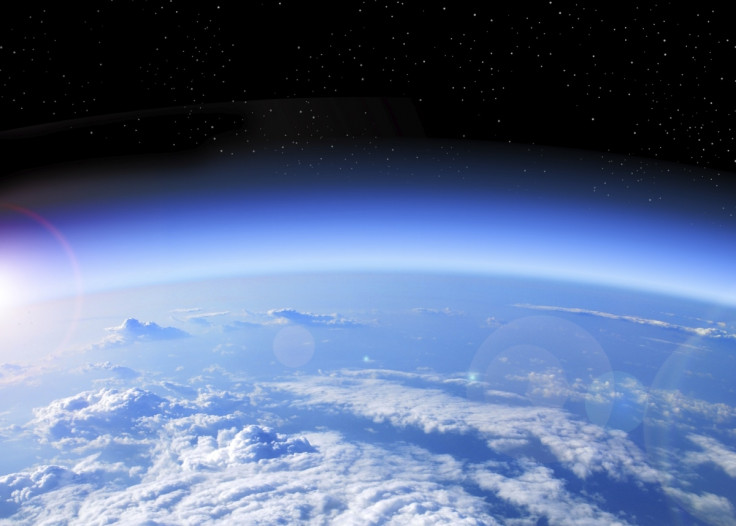International Day for the Preservation of the Ozone Layer: Is the shield in recovery?

The discovery of a hole in the ozone layer three decades ago was one of the most significant environmental achievements of modern times. A naturally occurring belt of ozone gas found between 15km to 30km above the Earth, the fragile shield absorbs most of the Sun's ultraviolet radiation. The breach, found above the Antarctic, posed a threat to both the ecosystem and human life.
Within several years of the discovery of the hole, the implementation of the Montreal Protocol in the late 1980s began to phase out the use of ozone-depleting substances – the manmade chemicals to blame for the diminishing levels of ozone in the upper atmosphere. Good news followed earlier in 2015, when a UN study found the ozone layer had begun to show early signs of thickening and the Antarctic hole had stopped growing.
Depletion of the stratospheric ozone layer is caused by the emission of chlorine and bromine-containing compounds such as chlorofluorocarbons
It is still fragile, though, despite these early signs of recovery. On the International Day for the Preservation of the Ozone Layer, Professor Martyn Chipperfield, of the School of Earth and Environment at the University of Leeds, explains the current state of the ozone layer and future threats it faces.
"Depletion of the stratospheric ozone layer is caused by the emission of chlorine and bromine-containing compounds such as chlorofluorocarbons (CFCs)," Chipperfield says. "Following the signing of the Montreal Protocol and its amendments, the total abundance of these chlorinated/brominated gases was observed to peak in 1993 and is now decaying slowly.
CFCs are non-toxic chemicals that contain atoms of carbon, chlorine and fluorine. They used to be used in the manufacture of aerosol sprays, blowing agents for foams and packing materials, as solvents and as refrigerants. When they reach the upper atmosphere, they are exposed to UV rays, which causes them to break down into substances that include chlorine – which destroys ozone molecules.
"The amount of chlorine and bromine in the stratosphere is also decreasing overall, in line with the expectations of the Protocol," he says. "This decrease lags the decrease in the lower atmosphere by a few years because of the timescale for atmospheric winds to transport the chlorine and bromine compounds through the stratosphere."

The story would be very different had the Montreal Protocol not been implemented. In a study published in May, Chipperfield and his colleagues suggest the Antarctic ozone hole would have grown by 40% by 2013, ozone-depleting substances would have increased and ozone loss would have been seen around the world. More UVB rays would have reached our bodies, which can cause skin cancer and cataracts in humans.
In the most populated areas of Australia and New Zealand, which have the highest mortality rates from skin cancer, Chipperfield's research predicted levels of surface UV would have increased by eight to 12%. In northern Europe, including the UK, it would have increased by 14% by 2013.
Chipperfield says the decrease in stratospheric chlorine and bromine is expected to lead to a recovery of the ozone layer, but it will be a gradual process. He says: "Observations of ozone have started to show an increase in regions where we would expect recovery. For example, the Antarctic ozone hole has been slightly less deep in the past five years or so.
"However, the amount of ozone in different regions of the atmosphere can vary from year to year through natural causes. So far the observed increases in ozone have not been large enough to separate fully the signal of recovery from this natural variability."
Observations of ozone have started to show an increase in regions where we would expect recovery. For example, the Antarctic ozone hole has been slightly less deep in the past five years or so
Essentially, Chipperfield says, while the ozone layer appears to be in recovery, it will take another five to 10 years to be sure. There are other problems, too. Nitrous oxide is not controlled by the Montreal Protocol and can cause the depletion of the ozone layer through the release of nitrogen compounds.
Chipperfield says the increased emission of nitrous oxide, for example through agriculture, could lead to renewed ozone depletion by the end of this century. It is also a greenhouse gas.
"While the ozone layer does appear to be on the road to recovery from the effects of gases such as CFCs, there are other potential problems in the future," Chipperfield says. "There remain some short-lived chlorine compounds which are not controlled by the Montreal Protocol – for example, dichloromethane."
Dichloromethane, an organic compound often used as a solvent, is used in the manufacturing process of some HFCs – the "ozone-friendly" gases that were developed to replace CFCs. Research has found the production of these chemicals is releasing some ozone-destroying gases into the atmosphere.
Chipperfield adds: "It was thought that gases such as this were too short-lived to reach the stratosphere, though they have now been observed there. Moreover, the atmospheric abundance of dichloromethane is increasing significantly for reasons that are not understood. Release of chlorine from compounds such as this could delay ozone recovery, though not reverse it."
© Copyright IBTimes 2025. All rights reserved.






















